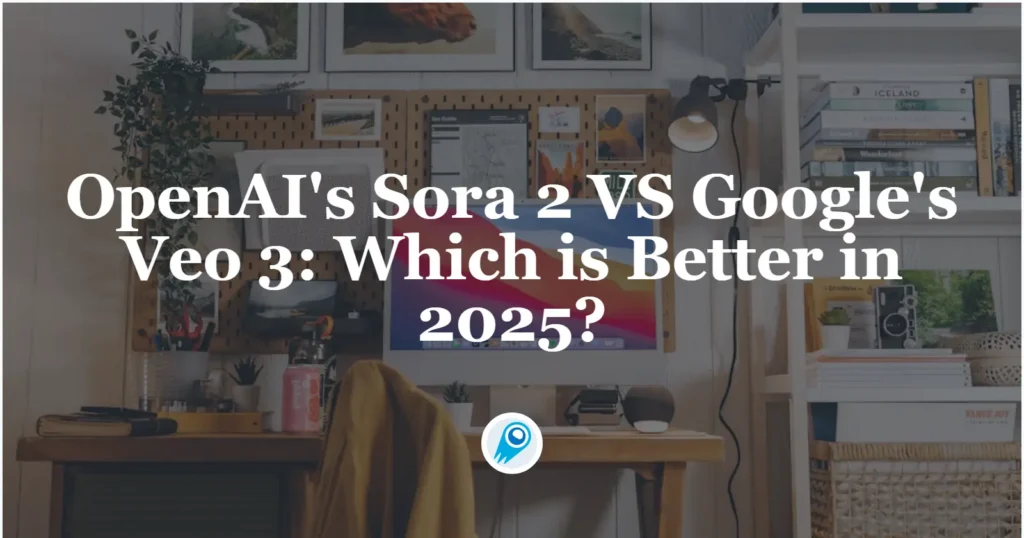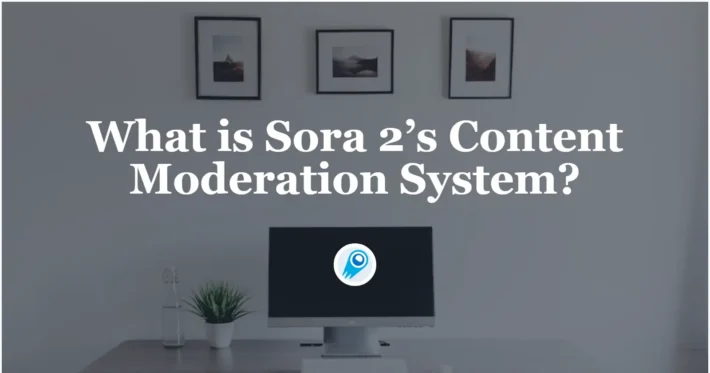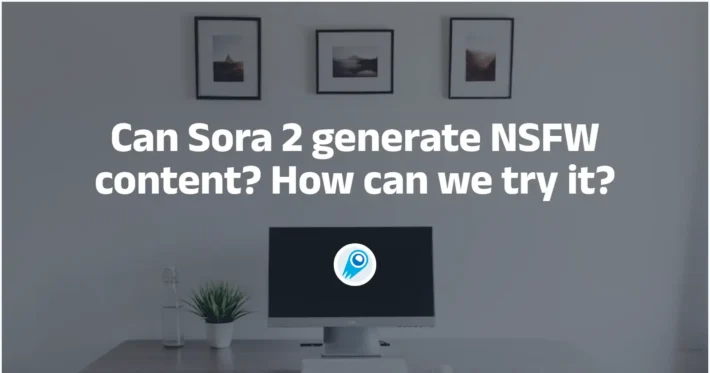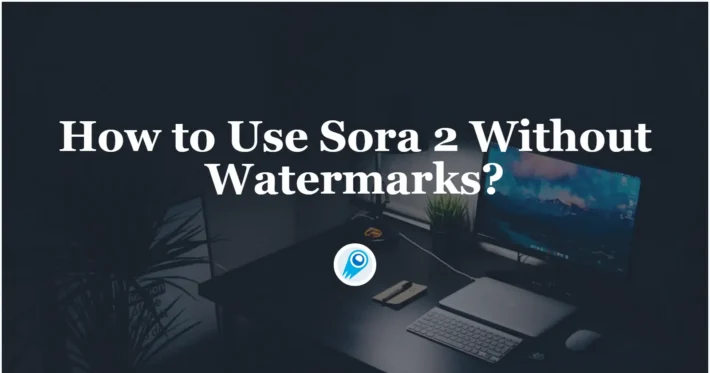OpenAI’s Sora 2 VS Google’s Veo 3: Which is Better in 2025?

The recent wave of generative video models has produced two headline-grabbers: OpenAI’s Sora 2 and Google/DeepMind’s Veo 3. Both promise to put high-quality, audio-synchronized, physics-aware short video generation into the hands of creators — but they take different product, distribution and pricing approaches. This article compares them end-to-end: what they are, how they work, how they’re priced and distributed, technical trade-offs, how they fit into broader ecosystems, and which model and product you should pick for specific use cases.
What is Sora 2 and what are its headline features?
Sora 2 is OpenAI’s second major release in its Sora family: a text-to-video video+audio generation model that emphasizes physical realism, synchronized audio (dialogue, ambient sound and effects), and controllability. OpenAI launched Sora 2 alongside a TikTok-style invite-only mobile app that presents an AI-generated feed and allows social sharing, remixes and short “cameo” videos that can include verified likenesses. The model claims improved consistency across shots (multi-shot continuity), finer steerability over style and camera, and more accurate handling of physical interactions such as collisions and fluids compared with earlier video models.
Core capabilities and features
- Synchronized audio (dialogue + SFX): Sora 2 generates audio that is timed to the visuals (lip-sync, environmental sounds and simple dialogue). This reduces the need to run a separate audio model or perform manual post-sound design in many short-form workflows.
- Input flexibility: Sora 2 accepts text prompts and image inputs to control scenes and characters, enabling remixing and “cameo” style personalized content in the app.
- Core capabilities and features
- Short, realistic video generation: Sora 2 emphasizes convincing short clips with improved physics, object permanence, and realistic camera behavior compared to earlier models. ([Medium][2])
- Synchronized audio (dialogue + SFX): A headline capability is generation of synchronized speech and sound effects that match on-screen action.
- Input flexibility: Sora 2 accepts text prompts and image inputs to control scenes and characters, enabling remixing and “cameo” style personalized content in the app.
- High steerability and style control: Sora 2 exposes controls for style, camera framing and certain camera movements, enabling creators to dial a result toward cinematic, handheld, animation, or stylized looks.
What is Veo 3 and what advantages does it bring?
What is Veo 3?
Veo 3 is part of Google/DeepMind’s family of video generation systems (often distributed via Gemini APIs and related developer offerings). While the “Veo” name is used internally and externally across Google/DeepMind materials, Veo 3 specifically refers to the 3rd iteration focused on photorealism, physics coherence, and full audio generation (dialogue + ambient sound) natively in the model. Google has positioned Veo as powerful for production pipelines and developer integrations, with a fast variant (“Veo 3 Fast”) targeting lower latency and cost.
What are Veo 3’s advantages?
- Best-in-class physics and realism (in some tests): Veo 3 is reported to excel at rendering realistic interactions, fine motion details, and correct object behavior under many circumstances; in reviewer head-to-head tests it sometimes outperformed rivals on particular physics tasks. ([安卓权威][6])
- Native audio generation: Veo 3 generates ambient noise, sound effects and dialogue without external stitching, so audio is an integrated output rather than a post-process. That can simplify workflows where fully synthetic audio is acceptable.
How do their technical specifications compare?
Below is a concise, practical comparison of the technical points most creators and engineers care about today.
| Dimension | Sora 2 (OpenAI) | Veo 3 (Google / DeepMind) |
|---|---|---|
| Typical demo clip length | ≈ 10 s (app demos) | 8 s (Gemini/Vertex preview) but API allows configurable lengths within quota |
| Resolution (common tiers) | 720×1280 (portrait) / 1280×720 (landscape); pro tiers up to 1792×1024. | 1080p support + vertical 9:16 options; 1080p/HD explicitly supported. |
| Native audio | Yes — synchronized speech, SFX, ambient. | Yes — native audio, joint audio-video training (latent diffusion). |
| Multi-shot / continuity | Strong short multi-shot/world-state persistence (app optimized). | Strong multi-shot fidelity in research; preview length is short but architecture supports coherence. |
| Architecture notes | Proprietary multimodal video/audio model family (Sora 2 / Sora 2 Pro). | Latent diffusion with joint audio-video latents; transformer denoiser in tech report. |
| Steerability | High — stylistic controls, cameo/likeness workflows. | High — programmatic controls, quality/latency tiers (Standard / Fast). |
| Physics / multi-object | Improved physics/world simulation (strong on faces & sync). | Strong physics and multi-object coherence in many tests. |
| Spawn speed | 15-35 seconds | 30-60 seconds |
| Best fit | Creator/mobile-first, face/lip-sync heavy UGC, quick viral content. | Studio/developer integration, batch generation, physics-heavy scenes, production pipelines. |
| watermark | Plus has a watermark Pro has no watermark | API calls have no watermark |
1. Resolution, duration and aspect ratios
- Sora 2: OpenAI’s public materials and API listings show portrait 720×1280 and landscape 1280×720 as supported output sizes in their standard tiers, with higher-quality “Pro” tiers offering larger resolutions. Sora 2 focuses on short clips (commonly demonstrated in the 8–20 second range in public demos).
- Veo 3: Veo 3 supports output up to 1080p for 16:9 and recently added vertical 9:16 support at high resolutions; Google also provides a “Fast” mode for lower resolution/latency outputs optimized for mobile social formats.
2. Audio, lip sync and SFX
- Sora 2: Explicitly highlights synchronized dialogue and sound effects as a key model improvement — and specifically highlights lip-sync accuracy and timing as a technical focus. Good choice when speech timing and facial sync are top priority.
- Veo 3: Generates audio natively (music, ambient sound and dialogue) and markets itself on producing high-quality audio that matches visuals; Veo 3’s integration into Flow emphasizes audio as part of the filmmaking pipeline. emphasize ambient realism and integrated sound beds — Veo especially highlighted in multi-actor / complex sound environments.
Both ship with native audio: Veo 3 has strong lip-sync and integrated sound design; Sora 2 highlights synchronized dialogue and sound effects, making both suitable for short narrative scenes. Differences emerge in tuning: Veo 3 often prioritizes naturalistic audio for cinematic outcomes; Sora 2 prioritizes sync and creative remixing for social content.
3. Physics, realism and steerability
- Sora 2: Stresses more accurate physical simulation (object permanence, plausible motion) and improved steerability — intended for more physically consistent scenes.
- Veo 3: Also touts realism, lighting fidelity and prompt adherence; reviewers and demos indicate excellent facial animation, lighting and camera motion. In practice, the two models appear close on realism, with differences apparent in edge cases and specific prompt classes.
4. Steerability & style controls:
- Sora 2: App and API expose stylistic controls (cinematic vs stylized looks) and “cameo” workflows for inserting likenesses — geared toward creators.
- Veo 3: Programmatic controls via Gemini API and multiple compute/quality tiers (standard vs fast) let developers script consistent styles at scale.
5. Visual quality and realism
- Veo 3: Consistently noted for cleaner lighting, smoother camera trajectories, and production-grade realism in short clips. Reviewers place Veo 3 ahead on cinematic polish.
- Sora 2: Delivers excellent realism and better physics control in many prompts; also offers a wider stylistic palette for deliberate creative distortion (anime, surreal, comedic). Sora 2 wins in creative flexibility and social virality.
6. API capabilities and integration
- Sora 2: Available in a consumer app plus an API with per-second pricing. OpenAI provides both standard and “pro” tiers for higher resolution and longer outputs.
- Veo 3: Offered through Google’s Vertex AI and APIs and embedded in YouTube/Flow. Developers can consume Veo 3 through cloud APIs with usage pricing, and Google provides variants optimized for latency and cost is “Veo-3-Fast”.
7. Controls, templates, and editing workflow
- Google: Offers Flow editing and closer YouTube integration to smooth the path from prompt to edit to publishing. Veo 3 paired with Flow is engineered for creators who want iterative editing and native publishing.
- OpenAI: Sora app emphasizes remixing, “cameos” (dropping users into scenes), and social sharing. OpenAI’s ecosystem is oriented around fast iteration and social virality, with API access for developers wanting backend control.
How do pricing strategies compare?
OpenAI / Sora 2 pricing model
Sora 2 (OpenAI): OpenAI publishes per-second SKU pricing for video generation. Example published rates include $0.10/sec for sora-2 (720×1280 / 1280×720), $0.30/sec for sora-2-pro at the same resolution, and $0.50/sec for higher-res sora-2-pro tiers. OpenAI also bundles Sora access into ChatGPT subscription tiers (Pro: 200$/Month, and offers an invite/free tier for consumers).
Google / Veo 3 pricing model
Google uses a hybrid subscription + pay-as-you-go strategy. Veo 3 is included in Google’s higher subscription tier (Google AI Ultra, announced at $249.99/month for premium access), while Google AI Pro at lower price points offers limited Veo 3 Fast access. For direct API usage, third-party reporting and Google’s developer docs point to per-second API pricing in the neighborhood of ~$0.75 per second for full Veo 3 generation (Veo 3 Fast and subscription credits reduce the marginal cost for many users). In short: Veo 3 is typically more expensive per second at the highest quality settings, but Google bundles it into expensive subscription tiers that simplify usage for enterprise customers.
API cost comparison and Cheap alternative
Sora 2 (OpenAI platform pricing):
sora-2(720×1280 / 1280×720): $0.10 / second.sora-2-pro(same base res): $0.30 / second.sora-2-prohigher res (1792×1024 / 1024×1792): $0.50 / second.
Veo 3 (Gemini API pricing):
- Veo 3 Standard (video + audio): $0.40 / second.
- Veo 3 Fast (lower latency / lower cost): $0.15 / second (Google announced price reductions and the Fast lane specifically to reduce costs).
Takeaway on pricing: Sora 2’s base tier (at $0.10/s) is cheaper for short clips than Veo 3 Standard; Veo 3 Fast at $0.15/s sits between Sora’s base and Sora-pro tiers, while Veo 3 Standard tends to be costlier but oriented to higher fidelity / production needs. Always compare final resolution, audio requirements, and batching discount options when estimating project cost.
CometAPI is a unified API platform that aggregates over 500 AI models from leading providers—such as OpenAI’s GPT series, Google’s Gemini, Anthropic’s Claude, Midjourney, Suno, and more—into a single, developer-friendly interface. By offering consistent authentication, request formatting, and response handling, CometAPI dramatically simplifies the integration of AI capabilities into your applications. Whether you’re building chatbots, image generators, music composers, or data‐driven analytics pipelines, CometAPI lets you iterate faster, control costs, and remain vendor-agnostic—all while tapping into the latest breakthroughs across the AI ecosystem.
Developers can access Sora 2 API(sora-2-hd; sora-2) and Veo 3 API( veo3-pro; veo3-fast; veo3) through CometAPI, the latest model version is always updated with the official website. To begin, explore the model’s capabilities in the Playground and consult the API guide for detailed instructions. Before accessing, please make sure you have logged in to CometAPI and obtained the API key. CometAPI offer a price far lower than the official price to help you integrate.
Sora 2: $0.16000
Veo3:
| veo3-pro | $2 |
| veo3-fast | $0.4 |
| veo3 | $2 |
| veo3-pro-frames | $0.4 |
How do access methods and ecosystems differ?
Sora 2 ecosystem
- Consumer access: Sora iOS app (invite/rollout), sora.com for web access.
- Developer access: OpenAI API with published sora models and per-second pricing; ChatGPT Pro / Pro-tier integrations for advanced usage.
- Ecosystem strengths: Strong app UX for rapid social content creation; OpenAI’s broader stack (ChatGPT, image models) makes multi-modal workflows straightforward.
Veo 3 ecosystem
- Ecosystem strengths: Deep integration with Google Cloud, Cloud storage, and a path to scale via Vertex and enterprise SLAs—strong for studios and companies already invested in Google Cloud.
- Consumer access: Gemini app (some promotionally free access), Flow for creators.
- Developer & enterprise access: Gemini API, Vertex AI (Model Garden / Media Studio) for production, Google Cloud billing, and integration with YouTube/shorts ambitions.
CometAPI provides access to both Sora 2 API(sora-2-hd; sora-2) and Veo 3 API( veo3-pro; veo3-fast; veo3) , allowing you to leverage both excellent models at a fraction of the cost without having to switch vendors frequently.
If you’re evaluating them for a project, pilot both in parallel for the specific content type you care about (social clips vs. cinematic scenes) and pick the one whose outputs, cost, and developer experience align with your production constraints.
Final recommendation: which is better?
There’s no single “better” model in absolute terms—Sora 2 and Veo 3 are both mature, capable systems and each wins in specific contexts.
If your priority is lowest per-second cost for quick social clips and you want strong face/lip sync, start with Sora 2 base. (Example: 10s ad ≈ $1 at $0.10/s.)
If you need higher production fidelity, guaranteed 1080p vertical/horizontal output, and programmatic batch integration, evaluate Veo 3 Standard or Veo 3 Fast inside the Gemini API and test the Fast tier for cost/latency tradeoffs.
Ready to Generate Video?→ Sign up for CometAPI today !



